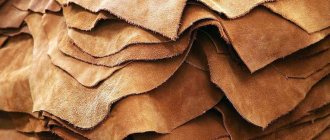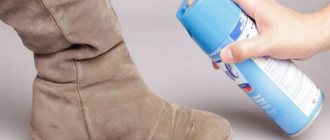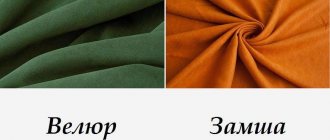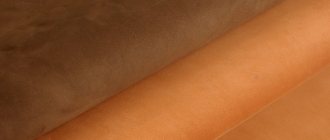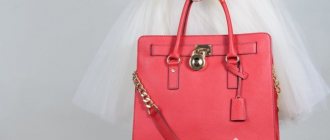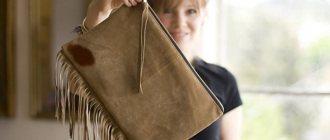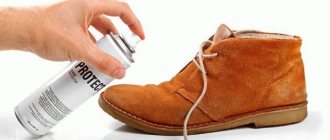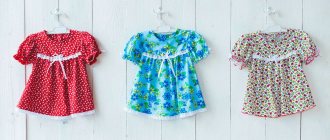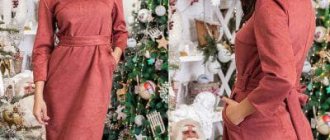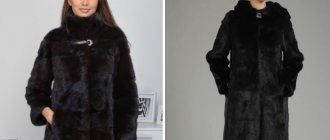Currently, the textile industry produces many materials that have similar qualities and differ little in appearance. This list includes nubuck and suede. It can be difficult for a simple consumer to determine at first glance what the difference is. This is often taken advantage of by unscrupulous sellers who pass off budget materials as their more expensive counterparts.
Features of materials
Both materials are brushed leather. However, having similar organoleptic properties, they differ significantly from each other in performance characteristics. The differences between nubuck and suede are due to the characteristics of the base raw materials and the specific processing.
Nubuck
Nubuck is made from the skins of cattle: bulls, yaks, buffaloes. Tanning is carried out using the chrome tanning method. The final stage is grinding using fine abrasive materials. The result is a fabric with very short fibers, which is almost impossible to stretch.
Used primarily in shoe and haberdashery production. Thanks to the porous surface, air is perfectly permeable, so feet in nubuck shoes do not sweat. The disadvantages are the following properties:
- Requirement for care. Without regular treatment with special brushes, the material begins to become shiny.
- Instability to moisture. On a material not treated with water-repellent impregnations, stains form upon contact with water, the canvas itself becomes rigid and can be deformed.
Typically, manufacturers indicate on the label if the material has undergone special processing. If there is no such mark, you should apply a protective compound to the new pair yourself.
Due to its resistance to impacts and stretching, nubuck is widely used in furniture production. If it is additionally treated with a special oil composition, a completely new material is obtained - nubuck oil, which has moisture-proof properties. Tactilely and visually it resembles natural leather. The material is smooth, stretches well, and when touched there is a feeling of moisture.
Natural nubuck
Suede
Suede is one of the most expensive types of polished leather. The classic version uses reindeer skins. It is acceptable to make leather from elk, goat, and deer. The material is produced using the fat tanning method, which ensures the thinness and velvety feel of the fabric. Its pile is higher and softer. Also, unlike nubuck, suede fabric stretches easily. In addition, suede perfectly allows air to pass through, holds its shape for a long time and retains its original appearance. Excellent for allergy sufferers due to its hypoallergenic properties. When unpainted it has a light beige color. In addition to shoes, it is used for the production of small haberdashery - gloves and bags, country and boho style clothing.
The main disadvantage is the same as that of nubuck - low moisture resistance. It is recommended to use such items only in dry weather. If the product gets wet, it must be completely dry before restoration. Brushes specially designed for suede will help restore the velvety feel.
Treat with water-repellent impregnations only when absolutely necessary - there is a high risk that the material will become more rigid. Before applying, you need to test the effect of the product on an inconspicuous area.
Natural suede
This is interesting: Holofiber - what kind of material is it: filler, description of types, pros and cons
What is nubuck: a separate subtype of leather
Now you can find on the market clothes and shoes made from environmentally friendly, inexpensive materials: eco-leather, a substitute for natural fabric, cheap analogues made from synthetic raw materials. Nubuck, like suede, is equated to a type of natural fabric. At first glance, it is difficult to distinguish them: soft surface, matte surface and budget price range.
You may be interested in: What women's watches are in fashion now: a review of watch brands. Women's watches Chopard and Louis Vuitton
The difference between nubuck and suede is as follows:
- Nubuck is made from cattle hides.
- The dressing process is accompanied by the use of the chrome tanning method.
- Grinding is carried out using abrasive materials.
This consistency in methods allows you to obtain a smooth surface with a minimum length of pile. Elasticity is lost, and it is almost impossible to stretch the canvas, unlike suede. If you don't take care of it, nubuck becomes greasy, losing moisture and natural fat.
The porous surface allows air to pass through well, so your feet “breathe” in such shoes. The material is extremely susceptible to water. It is not recommended to wear nubuck shoes in slush and rain. The surface becomes tanned and loses elasticity. In order for your purchase to last a long time, you need to take care of it by treating it with impregnations.
You may be interested in: Famous outlets in Dubai - description
Incompetent sellers often pass off nubuck as suede, increasing the cost of the product. The secrets of an experienced buyer, which you can learn about below, will help you avoid becoming a victim.
Nubuck
This is one of the varieties of natural leather. Despite the fact that nubuck products are widely represented on the market, there are many false statements about it. For example, for some reason many people believe that this is one of the varieties of leatherette. In fact, this is genuine leather treated in a special way.
Important! The manufacturing technology is as follows. The leather is subjected to chrome tanning and then polished using abrasives: sand, sandpaper. The purpose of this treatment is to obtain a velvety surface that is very pleasant to the touch.
Another typical mistake: they often equate suede with nubuck. Although they have only one thing in common: they are based on the skin of various animals. To obtain nubuck, cattle leather is used, which determines its strength.
The scope of its application is quite diverse:
- Making footwear: boots, shoes, boots: for men, women and children.
- Bags, purses, accessories.
- Outerwear. Vests and jackets are quite durable and warm, although they are not as common as suede ones.
- Furniture production - as upholstery, as an alternative to leather and textiles.
Important! It is hardly correct to say that nubuck or suede is more practical, since each of them has its own area of application.
Advantages:
- Beautiful appearance.
- Vapor permeability (the material “breathes”).
- Reasonable price.
Important! To appreciate all the advantages of this material, you need to be able to determine the quality of products and care for them. As an example, here are useful tips regarding shoes, since they are the most popular in using such material:
- How to choose the right nubuck shoes?
- How to clean nubuck boots?
Flaws:
- Need for special care.
- Inability to wear in wet and dirty weather. Clothes and shoes can be hopelessly damaged.
- Less durable than regular leather.
Kinds
In addition to natural, there is artificial nubuck. Outwardly, it looks like natural material and is quite wear-resistant. However, the “breathing” effect in an artificial product is completely absent. Breathability is also lower than that of natural tanned leather. The cost of products made from artificial material is quite low.
In addition to natural and artificial nubuck, there is also a third variety - nubuck oil. This is a material impregnated with fat, which protects the product from getting wet.
Important! Nubuck oil shoes feel damp or a little greasy to the touch. As practice shows, this is an ideal option for demi-season shoes. Therefore, if you think what is better - suede or nubuck for this time of year, then the choice is obvious.
What is the difference between nubuck and suede?
Nubuck is actually a type of suede, and both are typically made from leather such as calfskin, although they can also be made from sheep, cow, goat, or deer hide. At first glance, they look the same, but are actually created and processed differently, as noted earlier. Nubuck and suede differ from each other in that nubuck is created from the full-grain side of the hide, which is the outer part, while suede is created from the bottom part of the leather. Both of these leathers are created by sanding.
Because of this difference, there is a wide price range between nubuck and suede, with suede being the cheapest. Nubuck is made from the highest quality sanded leather used to make high quality leather products.
What is the difference between nubuck and suede:
- Nubuck has a velvety texture due to polishing, which creates a soft surface. Down are short protein fibers on the surface of the skin that help create a velvety surface.
- It is stronger and more durable, and more resistant to damage and wear than suede.
- It also has a genuine leather marking, giving it a rougher appearance than suede.
- Stronger and thicker than suede. It is usually more expensive than suede. For example, nubuck resists water damage because water simply darkens its surface temporarily and then dries without causing any long-term damage. Although its appearance is more similar to suede, nubuck has more similarities to aniline leather.
- Nubuck scratches easily. This is a vulnerable skin as it cannot use any type of protective coating.
Suede is much softer than nubuck because it is made from the inside of the leather, which is in contact with the flesh of the animal. It is sanded and polished to remove all impurities.
- Suede is more flexible than nubuck. It's much more subtle.
- Suede is a good material for lining shoes, but it is not as durable as nubuck.
- It can also be painted easily because it has a more porous surface and it is recommended to apply a protectant to the surface.
Leatherworkers must often apply dye or color to disguise the embossing and sanding techniques they use to finish nubuck leather, although sometimes the finished leather is white.
When caring for suede or nubuck, it is important to choose the right brush for each material. Since nubuck is a harder material than suede, if a nubuck brush is used on suede, it will damage the down. On the other hand, a suede brush used on nubuck will be virtually ineffective.
Many people find that suede shoes are harder to maintain and more expensive than their shiny leather counterparts. This is far from the truth. Suede and nubuck actually require less maintenance. These boots don't need polishing and don't need to be polished at all, so say goodbye to weekly shoe polishing.
The “New Year with the Family” campaign starts
The promotion is held annually, this year it will be held from November 23, 2018 to February 1, 2019.
Organizations for orphans and children left without parental care educate children who, for various reasons, cannot be placed in families. And only thanks to this campaign, children can feel the warmth of a real home, at least for a while. The “New Year in the Family Circle” campaign is aimed at ensuring that a child from an orphanage or boarding school, who has everything except family, feels the magic of New Year’s celebrations in the family circle. While in the family, the child develops family life skills and family traditions. The positive experience gained will help the child in the future when he leaves the government organization and finds himself in an independent life. Established family values will prevent the mistakes of their parents from being repeated and will help save the family and their children. Citizens wishing to host a child at home as part of the “New Year in the Family” campaign must collect a package of documents in accordance with the Rules for the temporary transfer of children, which are approved by Decree of the Government of the Russian Federation dated May 19, 2009 No. 432.
Detailed information on the issues of transferring children left without parental care can be obtained from the department of social and legal protection of children, guardianship and trusteeship of the education department of the Administration of the Zernograd district by tel. 8(86359) 36-1-28 (leading specialist A. N. Matveeva, office No. 227).
Differences on the shelves:
- Raw materials
For suede - the most expensive materials; for nubuck and velor - high-quality, but more affordable.
- Water repellent properties
Suede does not absorb water well, velor and nubuck require the use of special water-repellent agents.
- Velvety
Suede - on both sides, velor - on one side (bakhtarma), nubuck - on one side (the front part of the leather).
- Pile height
Suede - high pile, nubuck and velor - low.
- Shoe care
Simpler for suede, more careful for velor and nubuck.
What's better
Many people are faced with choosing products, so which is better? If high quality is important and it’s not difficult to spend a lot, then you need to buy suede. Nubuck is chosen by more economical people, but both products can look elegant, the main thing is to properly care for them. If you have to choose nubuck or leather, which is better, then it is advisable to give preference to leather. Both of these materials retain heat well, but leather is less demanding to use.
You may be interested in What is jersey knitwear: description of fabric and composition
Cleaning with baking soda
Genuine leather is not sanded. To produce the canvas, parts of the leather are taken that have no cracks or defects. Due to the high quality, no sanding is performed. The skin is treated with almost nothing.
Finished canvas
The properties of such material directly depend on the type of animal. During production, the product is polished and treated with a composition to preserve color. But only on the top layer. Thanks to processing, the canvas becomes more textured.
The advantages of genuine leather will be: versatility of use, good water-repellent properties, density and long service life. Sometimes creases appear that cannot be removed.
Range
The wide range of materials we sell allows us to produce budget shoes from inexpensive pigskin, model shoes from soft calfskin, and exclusive shoes from hides with original processing. In addition to the type of leather used, shoe upper materials differ in processing technologies, allowing you to make the best choice based on the purpose of the product.
Product diversity by type of raw material:
| Leather raw materials made from the skins of cows, bulls, calves of different degrees of maturity of animals (bull, cow, half-leather, outgrowth, flask) are distinguished from others by their high strength, moisture and wear resistance, variability of decorative processing with relative rigidity (with the exception of flask). Practical and optimal in terms of price to quality, reliable cow leather. Raw materials made from bovine hides are coarser and cheaper. Slightly inferior in strength to the skins of adult animals, calfskin is distinguished by greater softness, flexibility, and a smooth surface without bite marks or other defects. |
| The shoe upper, made from goats and sheep (chevro, shagreen, chevret, morocco), is distinguished by a beautiful natural mesh pattern, high elasticity, softness, and the ability to quickly take the shape of the foot. This raw material is perfectly dyed in bright colors. With exceptional comfort, the material is delicate, susceptible to negative influences, and requires careful treatment and care. |
| One of the cheapest options. It is rough, often has an uneven surface, and is inferior to cattle and sheep leather in terms of moisture resistance, but is quite durable and has high breathability. |
| The material made from foal, marking or reprocessing is slightly inferior to cattle in strength, density, and water permeability, but is distinguished by a larger area and shine. |
| Rare leather of reptiles (snakes, lizards, crocodiles), ostrich, kangaroo, camel and other exotic animals is of high quality and unique in aesthetic terms. This “piece” product is in demand by manufacturers of designer shoes. A similar in appearance, but more affordable option is obtained by embossing and applying decorative coatings to raw veal and pork hides. |
This is interesting: Felt - what is it: description of the material, properties and applications
Characteristics
Shoes, unlike other leather products, are subject to increased bending, compression, and stretching loads under conditions of humidity, exposure to the sun, pollution, and frequent cleaning. Meeting these conditions, the leather we offer for shoe uppers has high consumer properties:
- strength, resistance to deformation;
- softness, comfort to wear;
- water resistance on the outside with good moisture absorption on the inside;
- Possibility of use in any season;
- preservation of natural benefits due to minimal processing with chemicals.
How to distinguish visually
You can recognize suede fabric made from reindeer skin by stretching it and looking at the light - the surface will have many pores and small defects that make it heterogeneous. Such defects are the result of the activity of the midge, which ate the skin during the life of the animal. If such a check is not possible due to the design of the product, then you need to touch the material.
Expensive brands not only use high-quality materials, but also often indicate reliable information about raw materials, processing methods in labeling, as well as in the description of collections on their official pages.
If the fabric has a pile on both the outside and the back, it is definitely elite polished leather. In addition, the pile will be velvety and very pleasant to the touch. The material itself is soft and elastic. Additional signs that allow you to distinguish what material you have in your hands - nubuck or suede:
- The pile should be long, and the material itself should be easy to wrinkle. If the color changes when you run your finger over the surface of the product, then this is a sure sign of an elite material.
- You should consider the edges. There should be no cuts with different folds.
- The product model can also help you figure it out. Elite polished leather is used more often for elegant, sophisticated shoes: women's stiletto ankle boots, men's shoes. Nubuck can often be seen in rough boots like Timberland.
Sellers in stores, either unknowingly or deliberately, often call nubuck suede. You should never take someone's word for it; you should always inspect the product yourself.
Check the material by touch
Examine the edges
Pay attention to the product model
Fashion Line
Suede, velor, nubuck - what's the difference?
The three types of velvety skin are easily confused with each other. How do they differ, which material is more expensive, which is not afraid of water, and which requires careful care? Let's understand the differences between suede, velor and nubuck.
The most expensive type of polished leather. It is created from the skins of deer, elk and small cattle using fat tanning. This type of skin is velvety on both sides. The pile is high and soft. Thanks to the fat treatment, suede is resistant to water; it can even be washed in warm water if it is heavily soiled.
The pores in the skin allow air to pass through and provide natural ventilation of the foot. The material stretches easily without losing its shape. Suede shoes tolerate temperature changes well and do not cause allergies.
Velor - textile or leather?
This fabric is produced, like nubuck, from cattle. Only the raw material also uses the skin of domestic artiodactyl. In terms of price characteristics: the cheapest both in production and sale.
Velor is sanded from the inside like velvet, and nubuck is sanded from the outside like suede. Velor has its advantages compared to nubuck and suede:
- Less capricious material in terms of care and processing.
- The pile is low and hard. Rarely clogs and is easier to clean.
- Inexpensive, accessible material when purchasing shoes.
- Casual clothes are made from velor. Suits are rarely made from suede. Nubuck is not suitable for this at all.
A good pair of shoes can be purchased for free. You don't have to choose high, shiny suede to walk down the street. Velor is not as afraid of water as nubuck. It is, of course, attractive and affordable, but when it comes to low maintenance, suede is an indispensable material.
Comparison of characteristics: velor, suede and nubuck
If it is difficult to choose between suede, nubuck and velor, the differences are shown in the table. Compare them before buying shoes and care products:
| Index | Suede | Nubuck | Velours |
| Moisture resistance | It is not recommended to wet or wash suede with water or a damp brush. The fabric does not deteriorate, but over time it loses its fatty impregnation. | It is susceptible to moisture and loses its properties. | Completely loses its properties and is very susceptible to water. Recommended only in dry weather. |
| Cleaning | Simple. Special materials and brushes are used. | Thorough. Additional means are used to repel moisture. | Long, thorough. It is easy to remove debris and dust, but it is difficult to maintain the original appearance after 3-5 cleanings. |
| Care | Clean and treat the surface occasionally | Nubuck shoes require constant cleaning. Will help maintain the original appearance of the product. | Preferably after every wear. |
| Raw material quality | Elk, deer leather | Cattle hides | Skins of any cattle |
| Stretching | Good elasticity | Thick fabric | Doesn't stretch at all |
| Wear resistance | High | Average | Low |
| Tactile sensation | Since the leather is processed on both sides, there is a feeling of tenderness and smoothness of the material. | Medium tenderness, softness due to sanding of one side of the leather layer. | The pile is hard and less pleasant to the touch than suede or nubuck. |
Types of shoe uppers by processing technology
For shoe production, animal skins are tanned (chrome, aluminum, vegetable, combined, fat). Thanks to various technological and decorative processing (grinding, dyeing, application of impregnations, coatings, etc.), leather raw materials are given the necessary consumer and aesthetic properties. Externally, it can retain the natural pattern of the measure, have a polished front surface or bakhtarma, an extruded pattern (embossing), and various decorative coatings.
Popular varieties, manufacturing technologies:
| Aniline | Vegetable-chrome tanned material with minimal processing, organic dyeing. |
| Nappa | Thin leather of cattle or sheep, double tanned, with increased elasticity. |
| Shagreen | Sheep and goat hides with a characteristic grain pattern. |
| Kid | Durable goat material with good dimensional stability and hygienic characteristics. |
| Morocco | Lightly fattened, brightly colored skins of small sheep. |
| Varnish | Leather material from cattle, goats, chrome tanned, coated with varnish film or resins, with a shiny surface, reduced breathability. |
| Naplak | Nappa with varnish finish. |
| Yuft | Soft combined tanned hides with heavy fatliquoring to increase water resistance. |
| Nubuck | Chrome-tanned material made from cattle hides with a polished, velvety surface that absorbs light. By applying a special impregnation, nubuck oil (hydrophobic) is obtained. |
| Suede | Leather made from fat-tanned veal, deer, and sheep skins with the front or melon surface removed, increased ductility, softness, and breathability. |
| Velours | A fleecy chrome-tanned material made from calf skins, MRS, which looks similar to suede, but is inferior to it in terms of water resistance and dimensional stability. |
Where is suede used most often?
The differences between suede and nubuck are almost invisible. Features can be seen over time when purchasing shoes made from these materials. Made from suede:
Nubuck is less attractive in these areas.
Secondary school (military scientist) Zernograd
The municipal budgetary educational institution secondary school (military science) of the city of Zernograd was founded on September 25, 1996.
The first building stone of the school was laid in October 1992 by a construction company (India) and already on September 25, 1996, the spacious, cozy, bright classrooms of the school were waiting for their first students.
At that time, the school was named, according to resolution No. 595 of the Zernograd district administration: Municipal secondary school No. 16.
Areas of application of nubuck
Despite the slight differences between nubuck and suede, the first material has more disadvantages. The fabric is not so durable and elastic, therefore it is used in production:
- shoes;
- bags;
- furniture upholstery.
Edging materials and decorative pillows are also made from velor. In everyday life, the material is rarely used for its intended purpose. Due to its brightness, it is often used for fine and visual decoration of interior items.
Practical advice on fabric care
There are also many differences in caring for nubuck and suede. To maintain the original appearance of your shoes and easily clean them from dirt and dust, it is recommended to carry out the following procedures:
| Suede | Nubuck | |
| Cleaning from dust | This should be done using rubber brushes. Dry cleaning allows you to remove an invisible layer of dirt and restore brightness and depth of color. Spray foam with a cleaning function is used. After 5-7 minutes it is removed along with mud deposits. | Dry dirt is removed using an eraser, brush or clothes roller with a sticky layer. |
| Water protection | Although suede is waterproof, it does not withstand rain and slush well. Additionally, products with water-repellent properties are used. You need to treat the surface 10-20 minutes before leaving. | Waterproof impregnation is sprayed until the product stops being absorbed. This protects the nubuck from moisture. |
| Oily stains | In the first minutes after the rain begins, a sticky surface (machine oil, dust and dirt) forms on the road. Grease stains from suede are removed with a paper napkin (fresh), then with talcum powder or potato starch. After drying, clean with a brush (simple). | Removed with potato starch and ammonia. The crumpled pile is lifted with a brush. |
| Pile restoration | Use a simple sponge on the side where there is no abrasive layer. | Hot steam, brushes with sparse and high bristles. |
If you follow simple care rules, your shoes and clothes will last a long time. Don't neglect these simple but important recommendations. Remember - each material requires special attention and a careful approach to wearing.
Source
